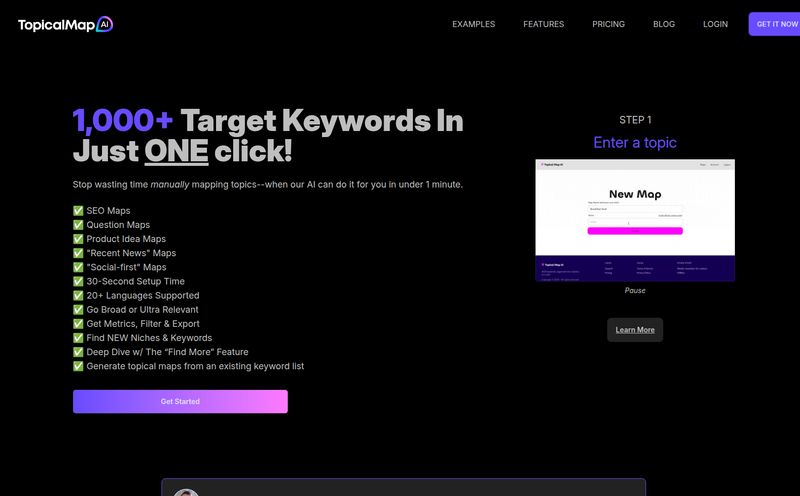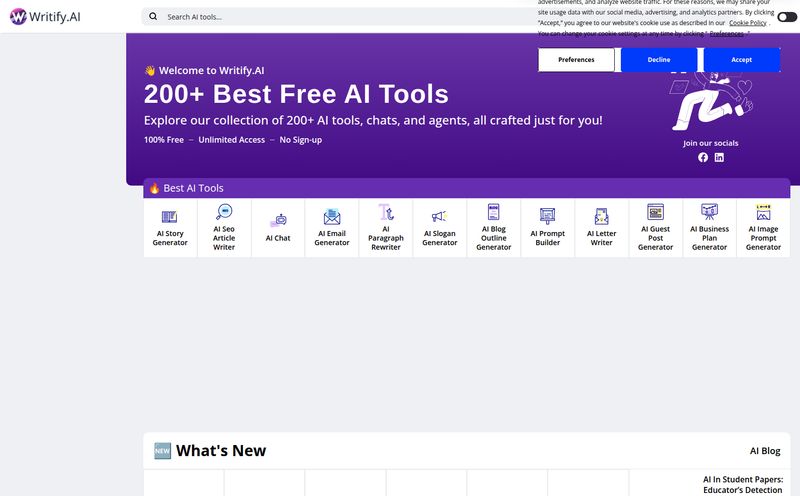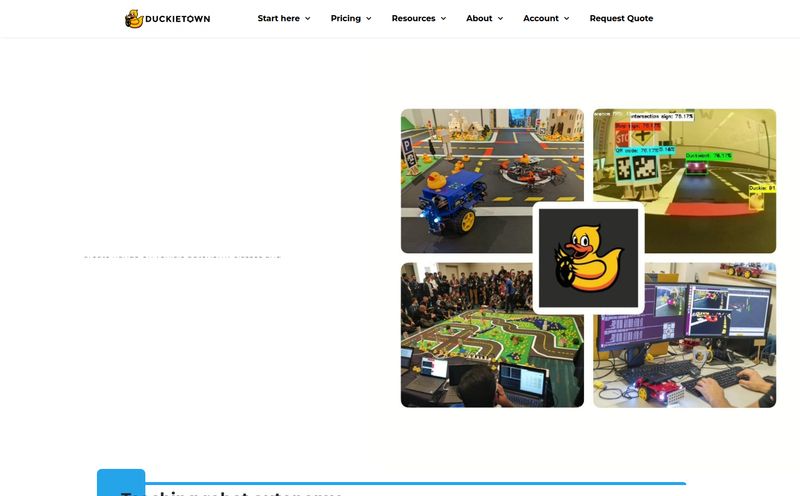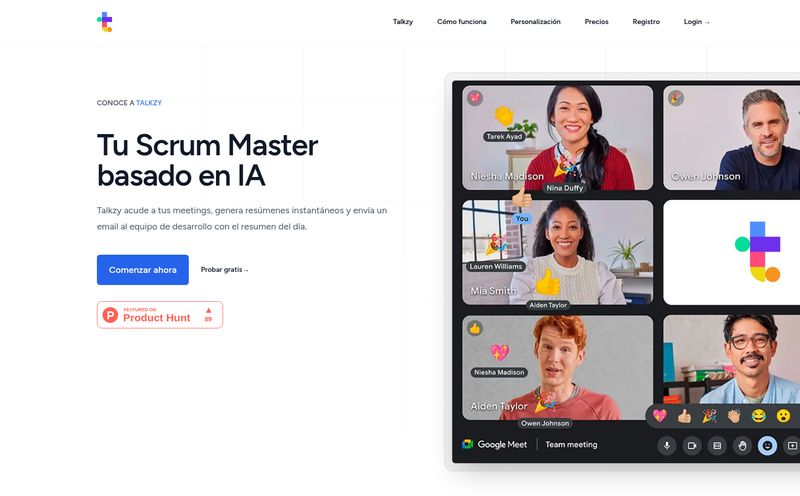If you’re in product, you know the drill. Customer feedback is a chaotic beast. It lives in a dozen different places: a Slack channel here, a Zendesk ticket there, some cryptic notes from a Gong call, and that one super long email from your biggest enterprise client. Trying to stitch it all together to find a coherent signal? It’s like trying to assemble a jigsaw puzzle in the dark. During an earthquake.
For years, we've been promised the holy grail: the “single source of truth.” A magical place where all this noise gets distilled into beautiful, actionable clarity. I’ve seen a lot of tools try, and frankly, most of them just become another silo. Another dashboard to check.
So when I came across YOMO, I was skeptical. Another AI platform promising to revolutionize my workflow? Sure. But the headline caught my eye: “build products that boost revenue and reduce churn.” That’s the language that gets budgets approved. So, I took a closer look. Is this finally the tool that tames the feedback beast?
So What Exactly is YOMO? (Beyond the Marketing Spiel)
Let's cut through the buzzwords. At its core, YOMO is designed to be a funnel for chaos. It connects to all the places your customers and customer-facing teams are talking—Intercom, Zendesk, Slack, you name it—and pulls all that raw feedback into one central spot. They call it the Feedback River, which is a pretty apt metaphor for the flood of data we all face.
But just having it all in one place isn't enough. We've had centralized repositories before. The real magic, or at least the promised magic, is in the AI layer on top. YOMO doesn’t just store the feedback; it reads it, analyzes it, and tries to understand it. Think of it as having a tireless team of junior PMs working 24/7, reading every comment, tagging themes, and flagging urgent issues. It's designed to automatically surface the problems, pains, and needs that you might miss if you were doing it all manually.
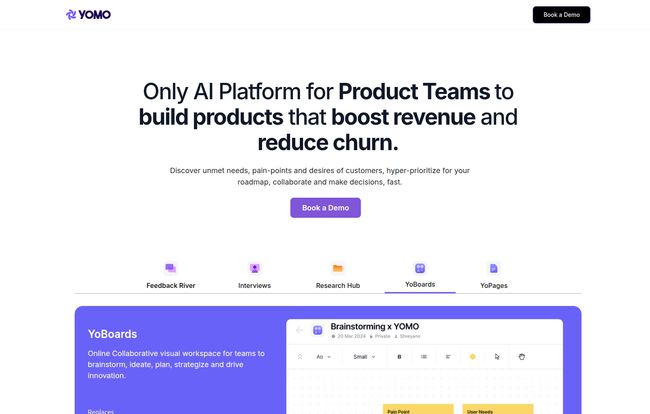
Visit YOMO AI
The goal isn't just to build a prettier backlog. It's to connect a specific customer complaint or suggestion directly to potential revenue or churn risk. That’s the stuff that gets everyone—from engineering to the C-suite—speaking the same language.
My Favorite Features and How They Actually Work
A tool is only as good as its features, right? I poked around to see what makes YOMO tick, and a few things really stood out to me as a practicing product person.
The Research Hub and AI Analysis are the Real Powerhouse
Anyone who’s run user interviews knows the post-call grind. Transcribing the audio, highlighting key quotes, trying to spot patterns across a dozen different conversations… it’s a massive time sink. YOMO's Research Hub aims to kill that grunt work. It can automatically transcribe and summarize your user interviews, which is a lifesaver on its own.
But the AI Analysis feature is where it gets really interesting. It claims to instantly generate opportunities from all this qualitative data. It can group related feedback, identify the sentiment behind it, and even suggest potential feature improvements. This moves you from a pile of transcripts to a data-backed proposal much, much faster. It's the difference between saying “I think users are confused by the onboarding” and saying “73% of new users who mentioned 'onboarding' in the last month expressed negative sentiment, and AI analysis suggests simplifying step 3 could be a high-impact fix.” See the difference?
YoBoards: A Nod to Miro and FigJam
Okay, so an online collaborative whiteboard isn't exactly a groundbreaking invention. We've all spent countless hours in Miro or FigJam. What’s compelling about YoBoards is its integration. Your research insights, your feedback river, your AI-generated opportunities—they all live in the same house as your brainstorming space.
The reduced context switching is a bigger deal than it sounds. You don’t have to copy-paste quotes from one app to another. You can supposedly drag an insight straight from the Research Hub onto a board and start ideating around it with your team. This creates a much tighter loop between discovery and delivery, which is something we all strive for.
The Good, The Bad, and The... Well, The Missing
No tool is perfect, and it’s important to look at YOMO with a critical eye. Here’s my honest breakdown.
| The Good Stuff | The Potential Downsides |
|---|---|
| Time-Saving AI: The automated analysis of feedback and interviews is a huge win. It frees up product teams from tedious manual work to focus on high-level strategy. | The AI Blindspot: My biggest reservation. AI is fantastic at spotting keywords and patterns, but can it truly grasp human nuance? Sarcasm, cultural context, the frustration in someone's voice… I worry that over-reliance on AI could lead to missing the subtle, qualitative 'why' behind the 'what'. |
| Revenue-Driven Prioritization: Tying feature requests directly to revenue impact is the dream. It ends the “loudest voice wins” problem and helps build business cases for your roadmap. | Potential Learning Curve: A platform this comprehensive will inevitably have a learning curve. It's not a simple to-do list app; getting your team onboarded and fully utilizing its power will take some effort. |
| True Centralization: Having research, feedback, and collaboration in one place is a powerful proposition for streamlining workflows and creating a shared understanding across the company. | The Missing Price Tag: This is a big one for me. When I clicked the pricing link, I got a “page doesn’t exist” error. This usually means it's an “enterprise, talk to sales” model, which can be a barrier for smaller teams or those who just want to try before they buy. |
| Solid Security: They mention being SOC2 and GDPR compliant, which is a non-negotiable for any company dealing with customer data. It's reassuring to see they take this seriously. |
Who is YOMO Actually For?
After digging in, it's clear YOMO isn't for everyone. If you're a solo dev with a handful of users, this is probably overkill. But if you're a scale-up or an established B2B SaaS company, this could be right up your alley.
I see this being most valuable for product teams who are feeling the growing pains of success. You have multiple product lines, dedicated customer support and sales teams, and the firehose of feedback is officially out of control. You need a system, not just another spreadsheet. It's for teams that want to make data-informed, not gut-feel, decisions and need a way to align the entire organization around what the customer is actually saying.
My Final Take: Is YOMO Worth a Look?
I have to say, I'm genuinely intrigued. YOMO is tackling a real, painful problem that nearly every product team faces. The approach of using AI to not just collect but synthesize feedback and tie it to business outcomes is the right one. It’s ambitious.
Is it the perfect solution? The jury's still out. The potential for the AI to miss qualitative nuance is real, and the lack of transparent pricing is a hurdle. You can't just swipe a credit card and get going, which is a shame. You'll have to go through the whole 'book a demo' process.
But despite that, if the problems I've described—the scattered feedback, the manual analysis, the disconnect between product and revenue—make you nod your head, then yes. YOMO is absolutely worth a look. It might just be the secret weapon you need to turn that customer chaos into your company's biggest competitive advantage.
Frequently Asked Questions about YOMO AI
- What is YOMO AI in simple terms?
- It's an all-in-one platform for product teams. It uses AI to gather all your customer feedback from different sources, analyze it to find important insights, and help you build a product roadmap that focuses on features that will actually increase revenue and keep customers happy.
- How does YOMO help with product roadmaps?
- It shifts roadmap planning from guesswork to data. By analyzing user feedback and linking it to potential revenue impact or churn risk, YOMO helps you prioritize what to build next based on what will provide the most value to both the customer and the business.
- Is YOMO secure to use with customer data?
- Yes, they appear to take security seriously. Their website states they follow major security and privacy protocols, including SOC2 and GDPR compliance, which are industry standards for handling sensitive customer data.
- What kind of tools does YOMO integrate with?
- It's designed to be a central hub, so it integrates with common tools where customer feedback is generated. Think of support platforms like Zendesk, communication tools like Slack and Intercom, and sales call software like Gong.
- How much does YOMO cost?
- That’s the million-dollar question. Currently, YOMO does not have public pricing on its website. To get cost details, you need to contact their sales team, which typically means they offer customized plans for larger teams and enterprises.
